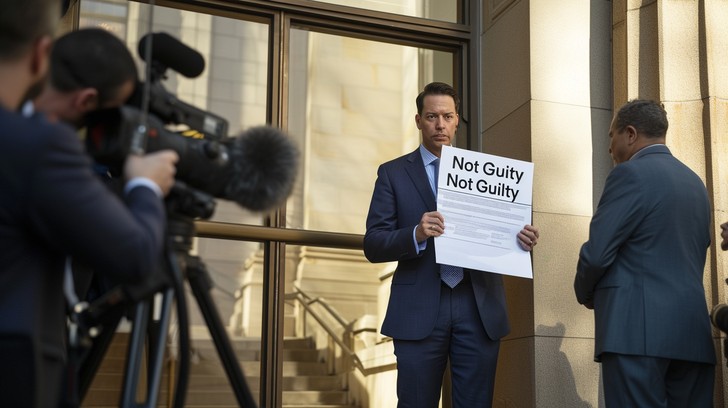Now Reading: The Intersection of NFTS and Copyright: Clarifying Ownership of Digital Art
-
01
The Intersection of NFTS and Copyright: Clarifying Ownership of Digital Art

The Intersection of NFTS and Copyright: Clarifying Ownership of Digital Art
The emergence of non-fungible tokens (NFTS) provides a unique perspective in the digital art world, creating new monetisation verticals for artists and unusual ownership experiences for collectors. However, the exploding market raises interesting legal challenges concerning copyright ownership and separate intellectual property rights. As the NFT market grows, understanding NFTS and copyright law is imperative for creators and brands consumers.
NFT Market Surge: What You Need to Know
In recent years, the NFT market has grown significantly, reaching $24.9 billion in 2021, according to DappRadar’s 2021 report. Artists, musicians, and creators have begun capitalising on NFTS to monetise their digital output, breathing new life into income streams that are typically unavailable in traditional markets. The growing fame has captivated many participants, from independent creators to larger corporations, all eager to take advantage of the unique opportunities NFTS bring.
NFTS, or non-fungible tokens, are uniquely identified digital assets verified using blockchain technology, enabling artists to tokenise their work for sale in a decentralised marketplace. A salient distinction between cryptocurrencies and NFTS is that NFTS are not fungible and can’t be duplicated, making them incredibly valuable for digital art. However, this very distinctiveness creates complications in the area of ownership and copyright law.
Copyright Dilemmas in NFTS
There are a few key challenges to copyright posed by the NFT market:
- Ambiguity of Ownership: The buyer is typically presented with a token upon selling an NFT that supposedly represents ownership of a digital asset. However, copyright ownership of the work underlying the NFT is not conveyed in this manner. This situation creates a misunderstanding where many buyers mistakenly believe that purchasing an NFT translates into full rights over the artwork, potentially leading to legal disputes. Indeed, in Rosenfeld v. Bittrex, the court grappled with the question of whether the sale of an NFT grants copyright to the underlying artwork, highlighting the need for clarity concerning ownership rights.
In Miroslav Dimitrov v. Frank Ape LLC, the court considered the distinction between ownership of NFTS and ownership of the copyright; a sale of an NFT does not transfer copyright unless specified in the contract terms. This underscores the importance of a well-defined legal framework governing NFT transactions.
- Risks of Infringement: The ease of creating and effecting the sale of NFTS raises concerns about copyright infringement. Artists’ works tokenised and sold since late last year without their consent could result in unauthorised use and loss of income. For example, digital artist Krista Kim discovered works being minted and sold as NFTS without her permission. The situation becomes a testimony to why one must take every step to ensure their work is protected in the digital realm.
Another notable case is Miramax v. Tarantino, in which Miramax challenged filmmaker Quentin Tarantino for selling his Pulp Fiction NFTS. This has raised various questions about who owns the rights to commercialise digital assets that are based on existing intellectual property.
- Trademark Concerns: Many brands are fighting to protect trademarks in the NFT space. Using brand names and logos in NFTS may cause consumer confusion and invite lawsuits from companies seeking to protect their intellectual property. A case in point is Hermès International v. Rothschild; luxury brand Hermès sued artist Mason Rothschild for his creation and sale of NFTS called “MetaBirkins,” which featured digital renditions of the classic design.
The Case of Hermès vs. Rothschild (2022)
The case of Hermès against Rothschild is one of the most critical cases that show the jurisdiction of NFTS and trademark law. Hermès sued Rothschild, claiming that the NFTS infringe upon the company’s trademark rights. The question before the court was whether Rothschild’s works fell under the category of artistic expression protected by the First Amendment or whether they constituted trademark infringement.
The court acknowledged Rothschild’s NFTS as artistic works; however, consumers were likely confused due to the strong association with the Hermès mark. This case balances the fine line between artistic freedom and protection from trademarks in the digital space. It also highlights the need for creators to be aware of existing trademarks while producing NFTS that reference or takes off from established brands.
Digital Rights Protection
The creators and brand owners should continuously update their rights-fighting strategies alongside the growing NFT market:
- For Creators: Artists must create clear licensing agreements that stipulate the terms for the use and resale of the NFTS. Understand the difference between ownership of the NFT and rights to the copyrighted material to avoid conflicts over ownership and control. Create watermarks for digital works, utilise watermarking and copyright protection, and consider registering with the U.S. Copyright Office to publicly establish ownership.
While platforms such as OpenSea and Rarible do provide templates for licensing agreements, these templates are often not legally binding. Artists should seek counsel to draft a binding agreement.
Artists can also use smart contracts to pay royalties and enforce licensing provisions automatically. For example, Ethereum-based NFTS allow creators to embed royalty clauses into smart contracts, thus ensuring that a percentage of resale profits goes back to them.
- For Brands: Companies should now revise their IP strategies to address the effects of NFTS in the first place. Keeping track of the entire NFT scene from the perspective of possible infringements and educating employees about what NFTS mean for current IP laws and how to adjust business practices will go a long way toward enabling them to capitalise on the innovation. Some brands may consider identifying their digital assets as trademarks to enhance their arsenal. Sending proactive cease-and-desist letters to infringers indicates how aggressively a brand intends to protect its integrity in the NFT marketplace. For instance, Nike has been vigorously protecting its trademarks in the metaverse by suing those who create NFTS without authorisation.
Conclusion
At the same time, it is a combination of opportunity and challenge for the creator or brand as NFTS and copyright law continue to connect. As the market grows, the legal landscape will be an essential pillar to protect intellectual property rights in this new digital age. The Hermès v. Rothschild and Miramax v. Tarantino cases are historic examples of the ongoing conversation between innovation and the protection of law, which clarifies ownership and rights in the developing NFT market.
As all interested stakeholders traverse and explore this complicated landscape, collaboration will offer avenues within which an effective and efficient intellectual property protection scheme will create the foundation for creativity and fair practice in the digital economy. In this fast-changing environment, staying informed and proactive will be fundamental ways to succeed in manoeuvring through NFT and copyright law intersections.










